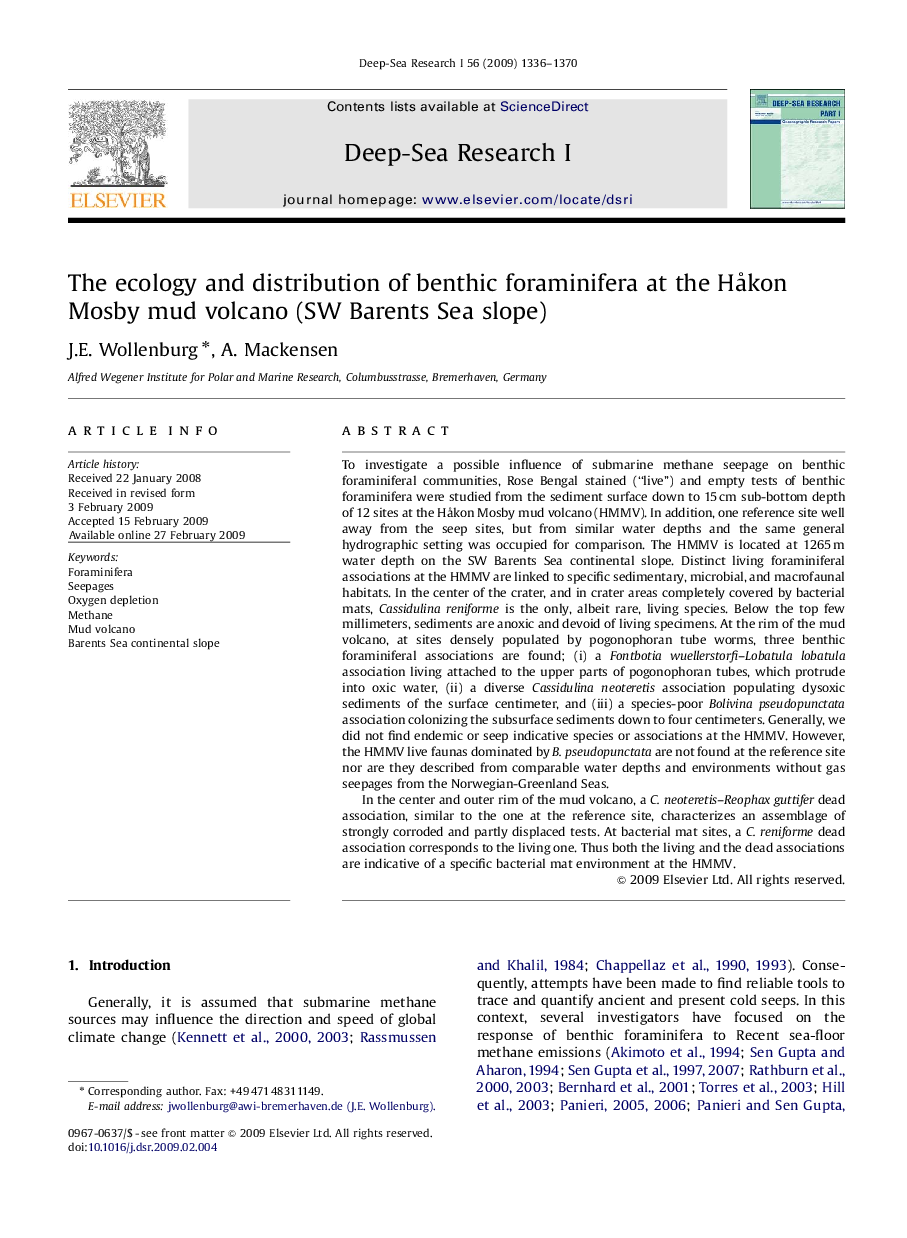| کد مقاله | کد نشریه | سال انتشار | مقاله انگلیسی | نسخه تمام متن |
|---|---|---|---|---|
| 4535070 | 1326081 | 2009 | 35 صفحه PDF | دانلود رایگان |

To investigate a possible influence of submarine methane seepage on benthic foraminiferal communities, Rose Bengal stained (“live”) and empty tests of benthic foraminifera were studied from the sediment surface down to 15 cm sub-bottom depth of 12 sites at the Håkon Mosby mud volcano (HMMV). In addition, one reference site well away from the seep sites, but from similar water depths and the same general hydrographic setting was occupied for comparison. The HMMV is located at 1265 m water depth on the SW Barents Sea continental slope. Distinct living foraminiferal associations at the HMMV are linked to specific sedimentary, microbial, and macrofaunal habitats. In the center of the crater, and in crater areas completely covered by bacterial mats, Cassidulina reniforme is the only, albeit rare, living species. Below the top few millimeters, sediments are anoxic and devoid of living specimens. At the rim of the mud volcano, at sites densely populated by pogonophoran tube worms, three benthic foraminiferal associations are found; (i) a Fontbotia wuellerstorfi–Lobatula lobatula association living attached to the upper parts of pogonophoran tubes, which protrude into oxic water, (ii) a diverse Cassidulina neoteretis association populating dysoxic sediments of the surface centimeter, and (iii) a species-poor Bolivina pseudopunctata association colonizing the subsurface sediments down to four centimeters. Generally, we did not find endemic or seep indicative species or associations at the HMMV. However, the HMMV live faunas dominated by B. pseudopunctata are not found at the reference site nor are they described from comparable water depths and environments without gas seepages from the Norwegian-Greenland Seas.In the center and outer rim of the mud volcano, a C. neoteretis–Reophax guttifer dead association, similar to the one at the reference site, characterizes an assemblage of strongly corroded and partly displaced tests. At bacterial mat sites, a C. reniforme dead association corresponds to the living one. Thus both the living and the dead associations are indicative of a specific bacterial mat environment at the HMMV.
Journal: Deep Sea Research Part I: Oceanographic Research Papers - Volume 56, Issue 8, August 2009, Pages 1336–1370